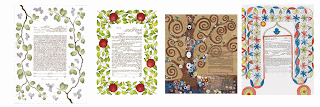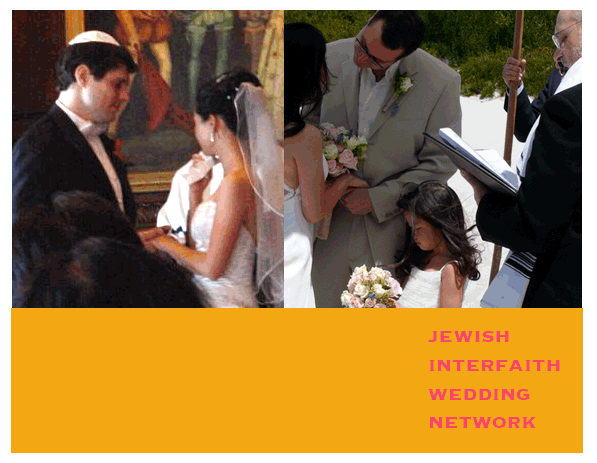For more information on chinese wedding traditions
Monday, March 10, 2008
Featured Ceremony: Jewish-Chinese: Tea Ceremony
For more information on chinese wedding traditions
Ask An Interfaith Rabbi
Would you explain to us what are The Seven Blessings in the Jewish Wedding Ceremony?
Adapted from ancient historical texts, the Sheva Berachot [The Seven Blessings] are a key element of the traditional Jewish wedding ceremony. They begin the second part of the wedding ceremony called Nissuin, where the community bestows it's blessing upon the couple.
Originally there were two separate rituals, Erusin [Betrothal] and Nissuin [The Wedding], which could be held months even years apart. Today, modern Jewish weddings combine both rituals into one ceremony with two parts. It is the custom to recite the blessings over a second cup of wine to remember the ancient ways.
In Jewish mysticism, seven is a significant number. According to the Torah, the physical world was created in six days, and on the seventh G-d rested. Every marriage is a creative process. It is the creation of a family, an ever-growing, unfolding process of love and understanding, a creation born out of a couple’s unique love for each other. They are meant to sanctify the marriage and echo the path of creation.
The first blessing, the wine ceremony, celebrates the Creator’s ability to create. Each blessing then becomes more specific, giving thanks for the creation of man and woman, then the birth of children, and the joys of marriage. These seven blessings, known in Hebrew as the Sheva Berachot, call marriage a joyful time that each generation should know.
There are many different ways couples choose to incorporate the Seven Blessings into an interfaith wedding ceremony. Sometimes they choose to have the rabbi recite the blessings in English only or they may honor seven family members or friends to give their own blessing. At one wedding, their were seven musical couples, each wrote a song for the kallah [bride] and groom [katan]. It turned into a mini-concert in the garden.
Adapted from ancient historical texts, the Sheva Berachot [The Seven Blessings] are a key element of the traditional Jewish wedding ceremony. They begin the second part of the wedding ceremony called Nissuin, where the community bestows it's blessing upon the couple.
Originally there were two separate rituals, Erusin [Betrothal] and Nissuin [The Wedding], which could be held months even years apart. Today, modern Jewish weddings combine both rituals into one ceremony with two parts. It is the custom to recite the blessings over a second cup of wine to remember the ancient ways.
In Jewish mysticism, seven is a significant number. According to the Torah, the physical world was created in six days, and on the seventh G-d rested. Every marriage is a creative process. It is the creation of a family, an ever-growing, unfolding process of love and understanding, a creation born out of a couple’s unique love for each other. They are meant to sanctify the marriage and echo the path of creation.
The first blessing, the wine ceremony, celebrates the Creator’s ability to create. Each blessing then becomes more specific, giving thanks for the creation of man and woman, then the birth of children, and the joys of marriage. These seven blessings, known in Hebrew as the Sheva Berachot, call marriage a joyful time that each generation should know.
There are many different ways couples choose to incorporate the Seven Blessings into an interfaith wedding ceremony. Sometimes they choose to have the rabbi recite the blessings in English only or they may honor seven family members or friends to give their own blessing. At one wedding, their were seven musical couples, each wrote a song for the kallah [bride] and groom [katan]. It turned into a mini-concert in the garden.
RITUAL ITEMS: THE KETUBAH: MODERN TRADITIONAL DESIGNS


We have been working very closely with ketubah artists to bring to you designs that are contemporary and reflective of your own personal and family traditions.
Visit Jewish Interfaith Wedding Network's ketubah gallery on our facebook page
CONTACT: Yehudit Steinberg
CONTACT: Yehudit Steinberg
email: info@asacredevent.com
Friday, March 7, 2008
Subscribe to:
Posts (Atom)

